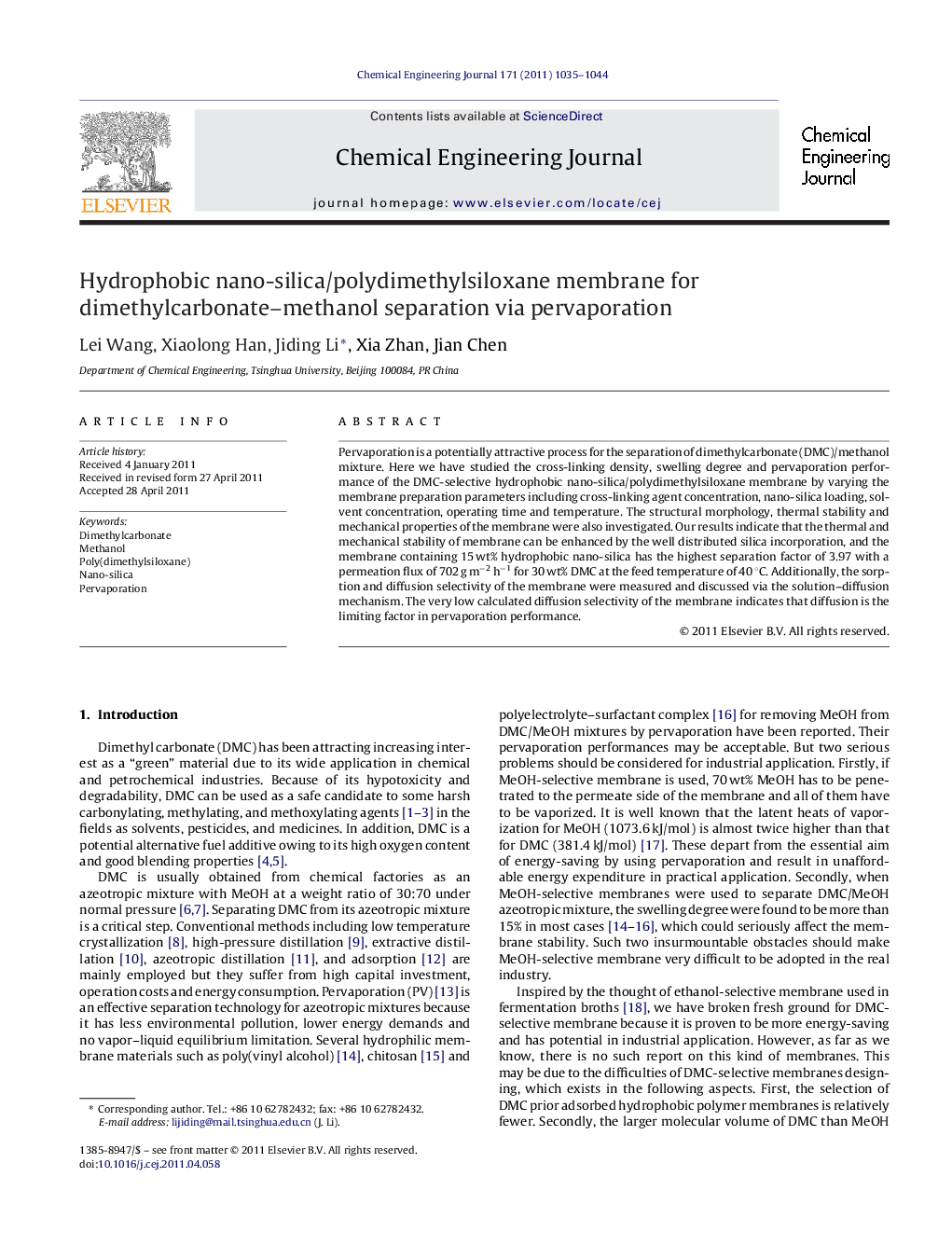| کد مقاله | کد نشریه | سال انتشار | مقاله انگلیسی | نسخه تمام متن |
|---|---|---|---|---|
| 150897 | 456459 | 2011 | 10 صفحه PDF | دانلود رایگان |

Pervaporation is a potentially attractive process for the separation of dimethylcarbonate (DMC)/methanol mixture. Here we have studied the cross-linking density, swelling degree and pervaporation performance of the DMC-selective hydrophobic nano-silica/polydimethylsiloxane membrane by varying the membrane preparation parameters including cross-linking agent concentration, nano-silica loading, solvent concentration, operating time and temperature. The structural morphology, thermal stability and mechanical properties of the membrane were also investigated. Our results indicate that the thermal and mechanical stability of membrane can be enhanced by the well distributed silica incorporation, and the membrane containing 15 wt% hydrophobic nano-silica has the highest separation factor of 3.97 with a permeation flux of 702 g m−2 h−1 for 30 wt% DMC at the feed temperature of 40 °C. Additionally, the sorption and diffusion selectivity of the membrane were measured and discussed via the solution–diffusion mechanism. The very low calculated diffusion selectivity of the membrane indicates that diffusion is the limiting factor in pervaporation performance.
► Pervaporation was used in dimethylcarbonate removal from dimethylcarbonate/methanol azeotropic mixture for the first time.
► The membranes prepared in this work could break the azeotropic balance and had excellent potential to be used industrial application.
► The preparation of DNS-2 nano silica/polydimethylsiloxane DMC-selective membrane was optimized experimentally.
► The performance of DMC-selective membrane was found to be mainly restricted by diffusion process.
► The effects of operation temperature and feed concentration on PV were studied.
Journal: Chemical Engineering Journal - Volume 171, Issue 3, 15 July 2011, Pages 1035–1044